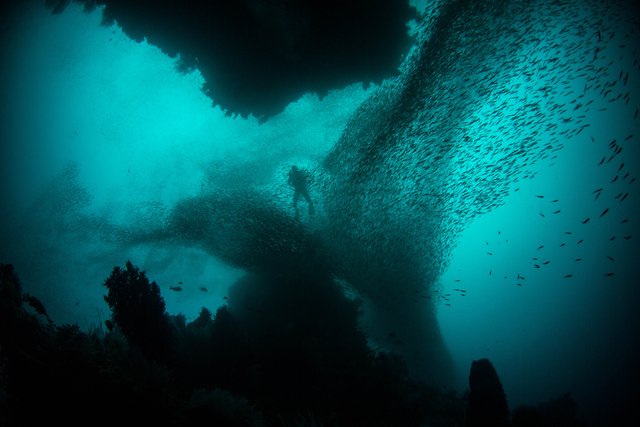They appear thinly scattered and swimming in the vast deep... (Virgil, Aeneid I, 118)

Each field of science is subject to unceasing change. Only the history waits with the watch in hand to fill the next pages in the chronicles. Nevertheless, the plasticity of history manifests itself in all its glory in various propaganda activities. And thus we have a past determined by the present. But not about it.
In each field of science one can distinguish some changes. When we reach the peaks of a given era, we can look back and retrieve the transformation harbingers. Changes can be sharp — through a revolution or a more lenient course — through reforms. Revolutions in thought/philosophy imply changes e.g. in art, revolutions in technology can be vividly visible, e.g. in natural sciences — in mathematics as well. The technological revolution connected with computerization is probably the closest to us, this occurrence has not gone unnoticed in the group of scholars who shaped the science at that time. And these were in Poland in about the 1990. Computerization of mathematics was inevitable, it was only to be directed to the right course.

Mathematics has been affected by the ever clearer division into pure and applied mathematics. For the followers of the first one, the math has "intellectual harmony as subtle and clear as tones of music" [T. Poston — Purity in application], is like a poem or general — poetry. However, applied mathematics is compared to legal prose. In part it is so and it seems quite consistent with the facts, but does it show a complete separation of roots from the indigenous mathematics? Excellently this is shown by the Hungarian mathematician Paul Halmos:
Picasso's portrait is considered by many to be beautiful, and the police photograph of a sought-after criminal may be useful, but probably Picasso does not show precisely the real similarity, and police photography does not provide artistic thrills. Is it quite wrong to call a portrait a bad copy of nature, and a photo — a bad art?
Pure mathematics is not completely unapplied mathematics, and applied mathematics is not always devoid of elegance. Picasso's portrait, although very abstract, carries some information, although there are few of them. And the portrait of the wanted criminal contains in itself the element of art. So the boundary between pure and applied mathematics is not a rigid boundary, which we can clearly define. Once again, the parallel of P. Halmos:
In a sense, red and orange are the same — just waves, whose lengths are a little different — and it is impossible to indicate point in the spectrum where red ends and orange begins — but it is still certain that red and orange are different and the task of distinguishing them is almost never difficult

There were many more such opinions and thanks to that we do not have a mental stratification in mathematics today. There is no aristocracy that deals with the care of the unpolluted beauty of mathematics and the working people, for whom mathematics is a hammer and a pick. There is one mathematics. And if there are any divisions, they are not caliber arousing any interest.
L. A. Steen describes it this way:
The world of mathematics can be imagined as a system of concentric layers surrounding the nucleus of pure mathematics. This nucleus is still red hot with the wealth of new ideas, new structures and new theories. Ideas from the nucleus constantly penetrate through the outer layers of mathematical sciences, providing a steady supply of intellectual fuel to some of the incredibly intricate problems with closer applications of the fields. And vice versa, the problems appearing in the outer layers — in the blurred contact surface, where pure mathematics connects with the applied sciences — supply the central nucleus with new structures, new methods and new concepts.
Every mathematician has his own field, every engineer uses mathematics. Each of them is sometimes a purist — a true-born mathematician — who, without any compromise, sticks to the determined methodological path. But each of them does not underestimate the intuition and possessed (bigger or smaller) experience in a given field. The approximate solutions obtained by numerical methods that have mastered the applied sciences are often priceless. The class division testifies to human limitations, closing in the narrow frames of any domain influences the inhibition of the natural human disposition to look for analogies, and analogies between analogies. Points that can be linked together are plenty. And how mathematicians of the last century have dealt with computerization of the scientific space is a perfect example of how to maintain the continuity of tradition and at the same time not to bury oneself in bunkers.
For this, however, it is necessary to constantly care for and fully justified are the misgivings of the Polish mathematician Stanisław Ulam (1909 - 1984, the precursor of artificial intelligence), expressing them in his autobiography "Adventures of a Mathematician". He compares modern mathematics to impressionist painting, which will break completely with heritage formed from antiquity.
Perhaps the result of this revolution will be claims based on strict mathematics, which are only visible thinly, which float in the vast deep. Perhaps we will experience stratification and the beauty of mathematics will have to be hidden in bathyscaphes among huge schoals of mathematical applications. It may be quite different and mathematics will be homogeneous. We'll see.
The title quote Apparent rari nantes in gurgite vasto (Latin) comes from Virgil, Aeneid I, 118. [interesting note: this inscription is on the monument of Hetman Stanisław Żółkiewski in Żółkiew, the monument was erected in 1677 by King of Poland John III Sobieski]
References:
- A. Wojciechowska — Rozwój matematyki a przemiany w jej nauczaniu (część II), Matematyka Społeczeństwo Nauczanie 2/1989.
- R. Courant — Matematyka w świecie współczesnym, PWN, Warszawa 1966.
Nice post. Well there is still a lot of bad blood between applied and pure math.
There is this very nice interview with the Fields Medal winner Cedric Villani where he more or less discusses how mathematicians and ordinary people view applied and pure math:
Thanks a lot! I didn't see this video before.
This post has been voted on by the steemstem curation team and voting trail.
There is more to SteemSTEM than just writing posts, check here for some more tips on being a community member. You can also join our discord here to get to know the rest of the community!
Hi @romualdd!
Your post was upvoted by utopian.io in cooperation with steemstem - supporting knowledge, innovation and technological advancement on the Steem Blockchain.
Contribute to Open Source with utopian.io
Learn how to contribute on our website and join the new open source economy.
Want to chat? Join the Utopian Community on Discord https://discord.gg/h52nFrV